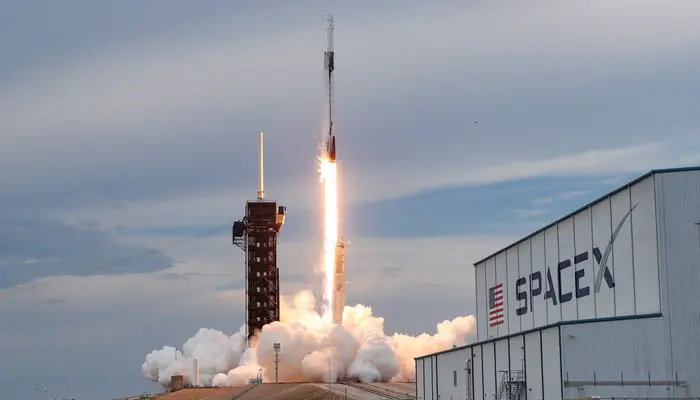SpaceX’s Crew-8 mission has safely returned a team of NASA and Roscosmos astronauts to Earth after an extended seven-month stay aboard the International Space Station (ISS). The mission, which experienced several delays due to weather and scheduling challenges, marks another successful return for SpaceX’s Dragon spacecraft, underscoring its importance for ongoing space exploration missions.
Key Facts of Crew-8’s Return
The Crew-8 mission, which began on March 5, 2024, concluded with the Dragon spacecraft’s splashdown off Florida’s coast early on Friday at approximately 3:30 a.m. EDT. Aboard the spacecraft were NASA astronauts Matthew Dominick, Michael Barratt, Jeanette Epps, and Roscosmos cosmonaut Alexander Grebenkin. The astronauts were originally scheduled to return in mid-August; however, NASA extended their mission as a precautionary measure to keep the Dragon capsule available for an emergency evacuation if required.
Additionally, delays resulted from Hurricane Milton, which postponed the crew’s undocking attempt on October 7. Following favorable weather conditions, the spacecraft was finally able to undock on Wednesday, making a smooth descent and splashdown in the Atlantic.
Read: India Approves $119 Million Fund to Boost Space Startups
The Role of Dragon in Supporting the ISS
NASA’s Crew-8 mission is part of a broader series of crewed SpaceX flights that support ISS operations. This mission, the 13th crewed flight for SpaceX and its eighth under NASA, involved over 200 scientific experiments focused on advancing human space exploration. While on the ISS, the Crew-8 team conducted studies on degenerative diseases through stem cell research, examined the effects of microgravity and ultraviolet radiation on plant growth, and tested pressure cuffs designed to mitigate health risks for astronauts in space. These studies aim to provide critical insights into the unique challenges humans face in prolonged space environments.
Upcoming Missions and Crew-9 Preparations
SpaceX’s work with NASA continues with several future missions planned. Crew-9, which launched in late September 2024, includes NASA astronauts Butch Wilmore and Suni Williams. Initially, Crew-9 was supposed to carry four astronauts, but NASA decided to reduce its roster to accommodate Wilmore and Williams’ return to Earth with Crew-9’s completion, scheduled for February 2025.
Looking further ahead, NASA has scheduled Crew-10 for February 2025 and Crew-11 for July 2025, expanding the partnership with SpaceX as it prepares for future crewed missions to the ISS and beyond.
The Importance of SpaceX Dragon for NASA’s Future Missions
The continued success of SpaceX’s Crew Dragon spacecraft has become pivotal for NASA’s current and future space missions. Furthermore, NASA Administrator Bill Nelson emphasized that missions like Crew-8 are vital to the agency’s long-term goals, helping to prepare for extended human exploration beyond Earth’s orbit. Through this partnership, NASA aims to refine the technologies and strategies needed for future deep-space missions, including potential lunar and Martian expeditions.
SpaceX’s Dragon spacecraft has not only proven its resilience and reliability for routine missions to the ISS but has also played a significant role in supporting international collaboration aboard the space station. As space exploration advances, missions like Crew-8 set the stage for what promises to be an exciting future for human space travel.
Follow us on Google News, Instagram, YouTube, Facebook,Whats App, and TikTok for latest updates
